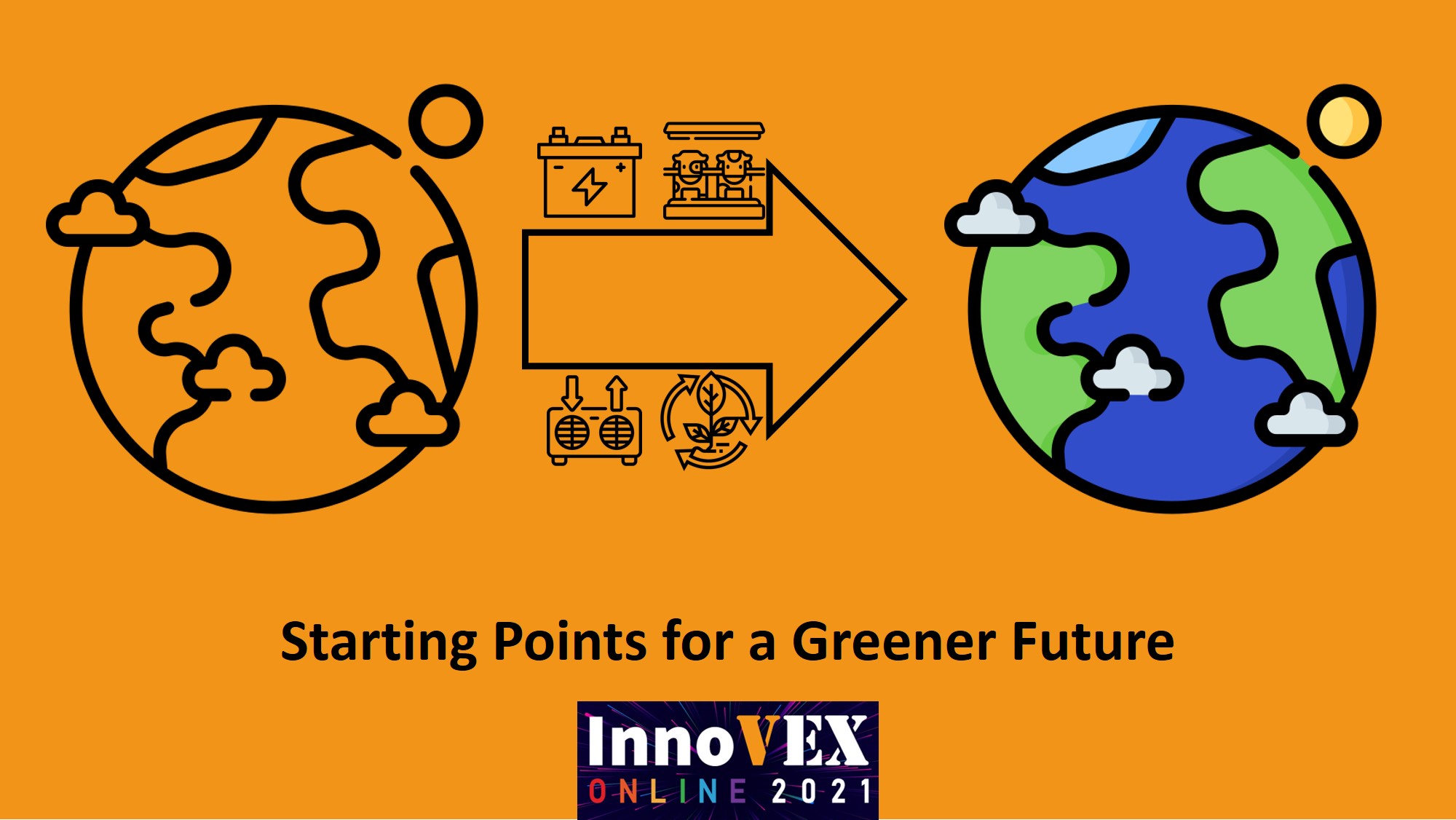
COP26 just ended on November 12 2021 with a global agreement to accelerate action on climate this decade. With the global population projected to increase by 30% to 9.8 billion by 2050, it is inevitable that more waste will be produced and more energy will be consumed. In fact, the global energy usage is expected to increase by 50% by 2050 (from 2021 numbers). While renewable energy generation growth should be among the higher one in terms of energy sources, concrete measures must still be taken to ensure the 1.5C threshold is not breached. This can mean taking a multi-pronged approach to reduce the effects of human activities on the climate such as energy consumption reduction, renewable energy, better waste management, waste prevention, etc. Currently there are many disagreements on the best method to achieve this goal, but one thing is certain: that whatever solutions we decide to go with, we must begin as soon as possible.
In this edition of the InnoVEX Editorial, we focus on 2 specific efforts in combating man-made climate change and reducing the negative effects of human activities: improved energy management and waste prevention. Through innovative solutions offered by our exhibitors that might be the needed solution or the starting point of what we need.
Better Energy Management is Necessary
Current electrical systems often rely on a stable supply of energy that might not be present and uninterruptible power systems (UPS) might only be usable for one specific device for a short amount of time; essentially just enough for a safe shutdown. In certain countries, backup generators are often used to power houses when the grid cannot supply enough electricity. Unfortunately, they are often loud, inefficient, and consume fossil fuel which means they will also pollute the environment.
One suggested innovation instead uses giant rechargeable batteries in place of the generators; such as the one offered by INTERXIE. Called the ENPO, their smart energy optimizer and power management system can be integrated with renewable power generator systems or store energy from the grid when availability is high and cost is lower before being used to power the house when power costs increase and supply is limited.
As climate change will also exacerbate extreme weather patterns, climate control technologies such as heating and air conditioning will also be a significant cost center for personal homes as much as businesses. Certain locations also need round-the-clock climate control, such as data centers, storage units, etc. While there is little to be done about this need, there is still room for innovation to step in and ease the economical and ecological pressure from the users.
Take for example the HeatTank from Hungary's HeatVentors. The system promises to improve the energy efficiency of currently existing HVAC systems to reduce energy consumption and CO2 emission. Using biomaterials called phase change materials, the HeatTank can store heat in a more concentrated form and reduce storage volume by 90% compared to the standard practice of storing heat in water.
Better Products for the Customer and Environment
Disposable cutleries that are ever-present in eateries around the world has become a significant problem for many countries as they threaten the delicate balance of marine ecosystems and even harm agricultural lands. The main problems they pose is due to how resistant they are to natural decay and biodegradation. Some alternatives might fulfill the biodegradable criteria easily, but might not be sustainably produced or economically viable as an alternative.
For EQUO, sustainability has become a unique selling point as they made biodegradable and sustainable cutleries and drinking straws made from materials sourced from their home country of Vietnam and nearby neighbours, including Taiwan. Offering plastic-free, biodegradable, compostable and non-toxic products; switching to their eco-friendly products is an obvious choice for eateries, restaurants, diners, etc.
The benefits of biodegradable and compostable products is that they can be repurposed into fertilizers once they are no longer desired or needed. However the entire process that turns the remnants from waste into resources might take some time and not all bio waste, even if they are kitchen waste, can be composted. While high-tech solutions such as pyrolysis is a possibility, some more conventional methods with a modern spin can be the best approach to utilizing bio waste as a resource to create more resources.
Wormarvel utilizes vermiculture to constantly digest organic waste from animal waste, sewage sludge, and most importantly anaerobic digested slurry; which can be used for organic fertilizer but may contain contaminants that can be damaging in agriculture use. Their vermiculture solution then can break down the potentially hazardous material into useful bio-humus, protein in the form of worms, and irrigation quality water.
Learn more about INTERXIE, HeatVentors, EQUO, Wormarvel, and more InnoVEX ONLINE exhibitors here.
Look forward to more updates from InnoVEX
InnoVEX ONLINE 2021 matchmaking may have ended, but this is far from the end of it. Operating for the whole year, the InnoVEX ONLINE platform is active 24/7 and visitors can check out the exhibitors at any time and even contact them directly through the PinChat function built into the platform. There will also be news from InnoVEX regularly that will be published and sent via the weekly InnoVEX Tech Startup News digital newsletter. The content will also include highlighted exhibitors, pavilions, and other features of InnoVEX ONLINE 2021. Subscribe to the InnoVEX Tech Startup News here and never miss an update from InnoVEX.
InnoVEX 2022 is now open for Registration
In addition to the online platform, the 2022 InnoVEX onsite exhibition will take place in Taipei, Taiwan from May 24-27,2022. Online registration for both the hybrid exhibition or the InnoVEX ONLINE platform have started for global exhibitors. For more info or registration details, please click here.